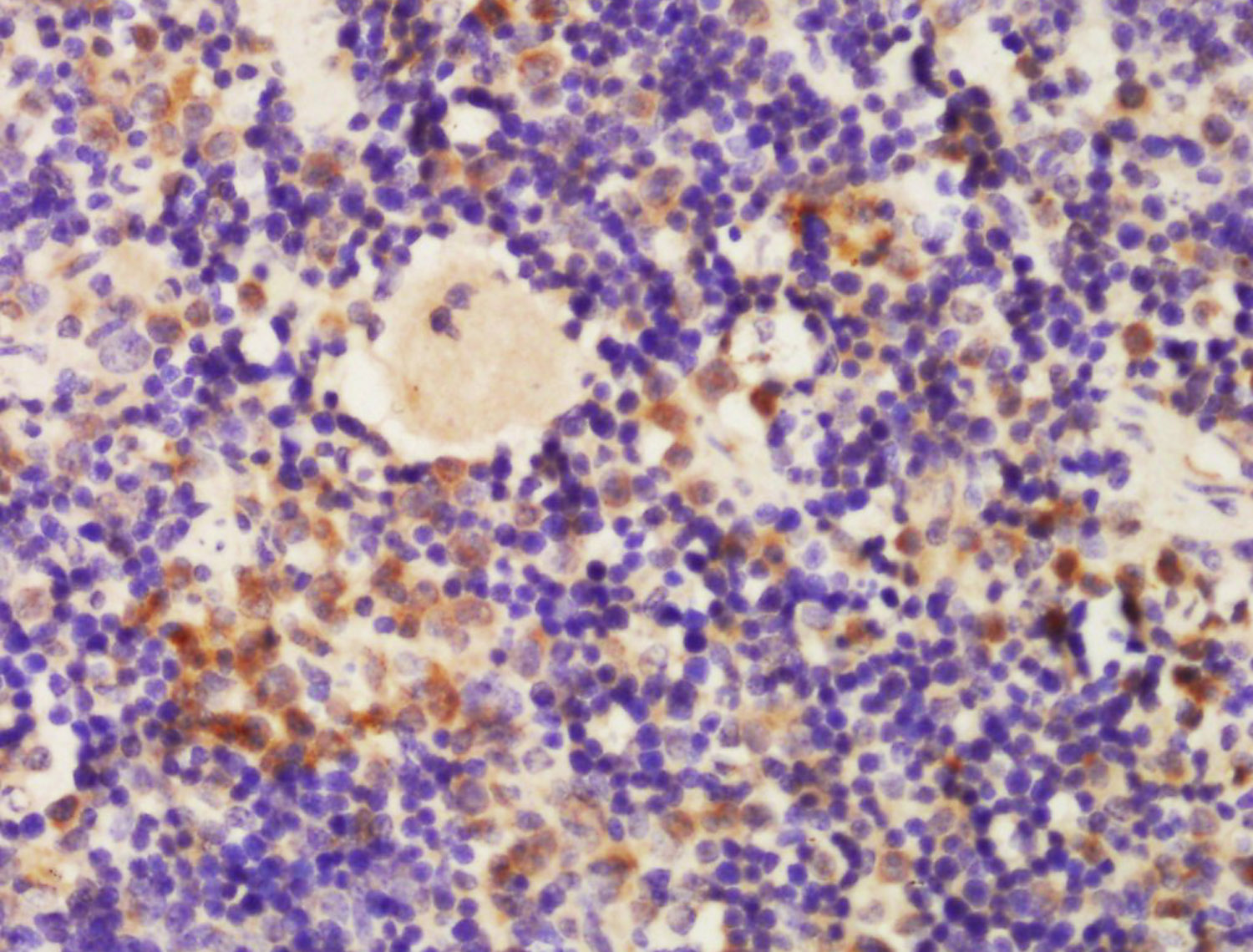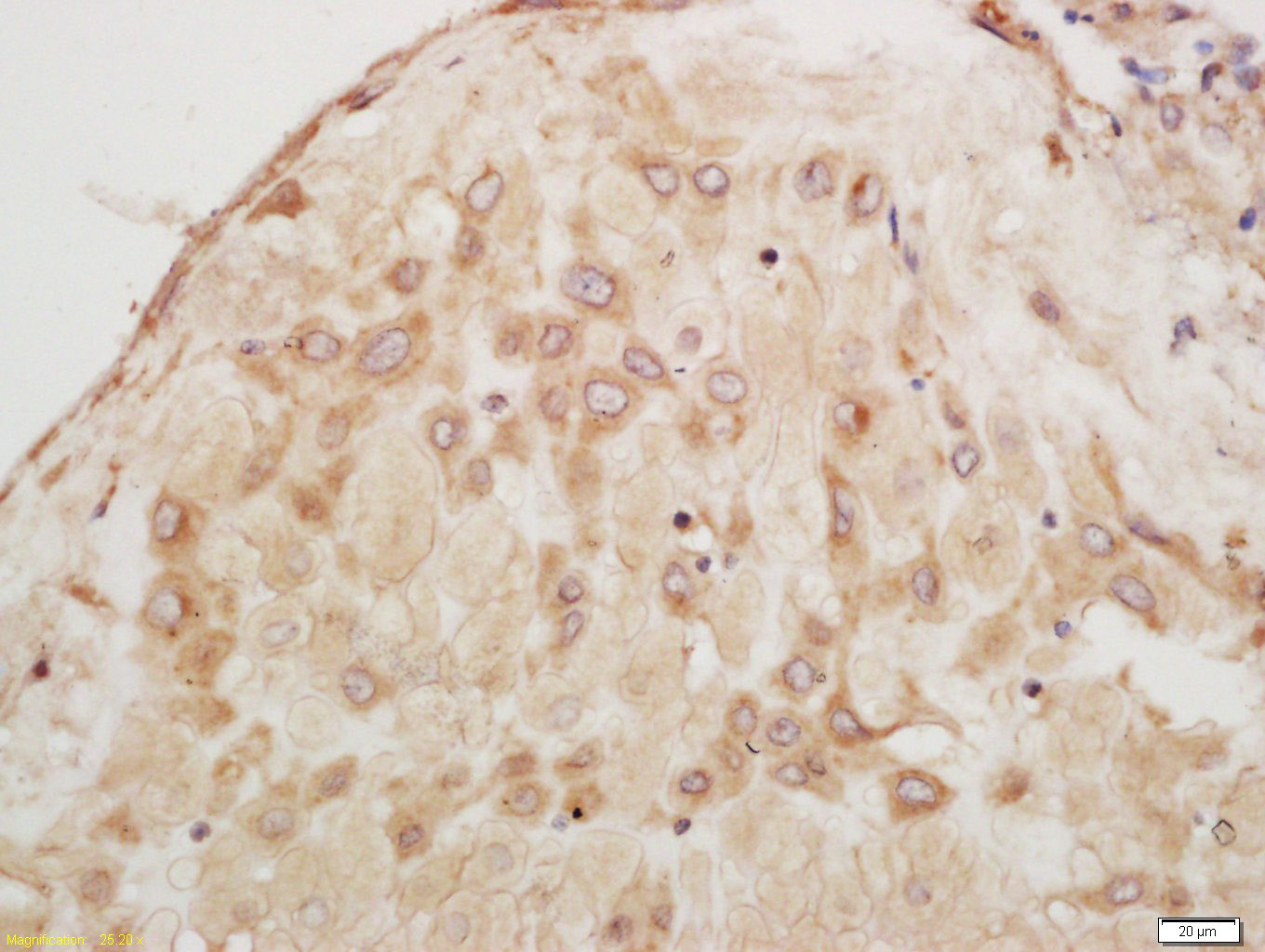
Rabbit Anti-Apolipoprotein CII/APOC2 antibody
APC 2; APC2; Apo CII; APOC 2; ApoC II; apoC-II ;APOC2; APOC2 protein; ApoCII; Apolipoprotein C II; Apolipoprotein C II precursor; ApolipoproteinCII; MGC75082;
View History [Clear]
Details
Product Name Apolipoprotein CII/APOC2 Chinese Name 载LipoproteinC2抗体 Alias APC 2; APC2; Apo CII; APOC 2; ApoC II; apoC-II ;APOC2; APOC2 protein; ApoCII; Apolipoprotein C II; Apolipoprotein C II precursor; ApolipoproteinCII; MGC75082; Research Area Tumour Cell biology Signal transduction The new supersedes the old Immunogen Species Rabbit Clonality Polyclonal React Species Human, Mouse, Applications WB=1:500-2000 ELISA=1:5000-10000 IHC-P=1:100-500 IHC-F=1:100-500 IF=1:100-500 (Paraffin sections need antigen repair)
not yet tested in other applications.
optimal dilutions/concentrations should be determined by the end user.Theoretical molecular weight 9kDa Cellular localization Secretory protein Form Liquid Concentration 1mg/ml immunogen KLH conjugated synthetic peptide derived from human Apolipoprotein CII/APOC2: 31-101/101 Lsotype IgG Purification affinity purified by Protein A Buffer Solution 0.01M TBS(pH7.4) with 1% BSA, 0.03% Proclin300 and 50% Glycerol. Storage Shipped at 4℃. Store at -20 °C for one year. Avoid repeated freeze/thaw cycles. Attention This product as supplied is intended for research use only, not for use in human, therapeutic or diagnostic applications. PubMed PubMed Product Detail Apolipoproteins are protein components of plasma lipoproteins (1). The apolipoprotein C gene family encodes four homologous proteins designated apoC-I to -IV, which specifically modulate the metabolism of triglyceride-rich lipoproteins (2). The human apoC-I gene maps to chromosome 19q13.2 and is expressed primarily in the liver where it is activated when monocytes differentiate into macrophages (3,4). The human apoC-II gene maps to chromosome 19q13.2 and encodes a 79 amino acid single chain protein that is a necessary cofactor for the activation of lipoprotein lipase, the enzyme that hydrolyzes triglycerides in plasma and transfers the fatty acids to tissues (5–7). The human apoC-III gene maps to chromosome 11q23 and encodes a protein that may delay catabolism of triglyceride-rich particles by inhibiting lipoprotein lipase and hepatic lipase (8). The human apoC-IV gene maps to chromosome 19q13.2 and encodes a 127 amino acid protein that is primarily expressed in the liver (9,10).
Function:
At least 9 distinct polymorphic forms of apolipoproteins are known. The apolipoproteins act as stabilizers of the intact lipoprotein particles. Quantitative measurements of HDL, LDL and VLDL particles in human serum are often used to estimate an individuals' relative risk of coronary heart disease. In addition, quantitative immunological measurements of certain apolipoproteins (especially A-1 and B) have been suggested to be more accurate estimators of coronary heart disease than measurements of lipoprotein particles (especially HDL and LDL). Apolipoprotein C-II (apoCII) is in found in chylomicrons (large lipoprotein particles absorbed from the gastrointestinal tract) and VLDL (large lipoproteins that are broken down to eventually form LDL). ApoCII activates the enzyme lipoprotein lipase, which hydrolyzes triglycerides and thus provides free fatty acids for cells.
Subcellular Location:
Secreted
Tissue Specificity:
Secreted in plasma.
DISEASE:
Defects in APOC2 are the cause of hyperlipoproteinemia type 1B (HLPP1B) [MIM:207750]. It is an autosomal recessive trait characterized by hypertriglyceridemia, xanthomas, and increased risk of pancreatitis and early atherosclerosis.
Similarity:
Belongs to the apolipoprotein C2 family.
SWISS:
P02655
Gene ID:
344
Database links:
UniProtKB/Swiss-Prot: P02655.1
Product Picture
Antigen retrieval: citrate buffer ( 0.01M, pH 6.0 ), Boiling bathing for 15min; Block endogenous peroxidase by 3% Hydrogen peroxide for 30min; Blocking buffer (normal goat serum,C-0005) at 37℃ for 20 min;
Incubation: Anti-APC 2 Polyclonal Antibody, Unconjugated(SL12497R) 1:200, overnight at 4°C, followed by conjugation to the secondary antibody(SP-0023) and DAB(C-0010) staining
Tissue/cell: human placenta tissue; 4% Paraformaldehyde-fixed and paraffin-embedded;
Antigen retrieval: citrate buffer ( 0.01M, pH 6.0 ), Boiling bathing for 15min; Block endogenous peroxidase by 3% Hydrogen peroxide for 30min; Blocking buffer (normal goat serum,C-0005) at 37℃ for 20 min;
Incubation: Anti-APC 2 Polyclonal Antibody, Unconjugated(SL12497R) 1:200, overnight at 4°C, followed by conjugation to the secondary antibody(SP-0023) and DAB(C-0010) staining
Bought notes(bought amounts latest0)
No one bought this product
User Comment(Total0User Comment Num)
- No comment




 +86 571 56623320
+86 571 56623320
 +86 18668110335
+86 18668110335

